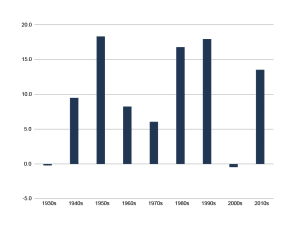What to Know About the New RMD Regulations
In July, the IRS issued final regulations related to required minimum distributions (RMDs) from retirement accounts, clearing up some of the controversy and uncertainty surrounding changes made under the SECURE Act and the SECURE 2.0 Act.
The final regulations, which go into effect on Jan. 1, 2025, confirm that non-eligible designated beneficiaries — generally someone other than the original account owner’s spouse — must take RMDs annually to satisfy the 10-year rule for withdrawals. Beneficiaries who were supposed to take RMDs from 2021 to 2024 don’t have to make up for missed distributions and will not face a penalty.
These regulations will bring significant changes to the landscape of retirement account distributions and tax planning. Here are some key developments to be aware of as you begin planning for next year:
Key Highlights of the Final Regulations
The 260-page document provides extensive guidance on specific scenarios affecting both eligible and non-eligible designated beneficiaries. Here are some notable points:
- Handling Undistributed RMDs in the Year of Death : Importantly, if an individual has not yet fully satisfied their RMD for the year at the time of their death, their beneficiary or beneficiaries must fulfill the remaining RMD.
- Hypothetical RMD Rule for Surviving Spouses : Surviving spouses who initially elect the 10-year rule can later choose to roll over or treat the inherited account as their own. This rule outlines the implications of such choices, providing flexibility for surviving spouses in managing their inherited accounts.
- Roth Accounts and the 10-Year Rule : If a participant’s entire plan balance is in a designated Roth account, non-eligible designated beneficiaries are not required to take annual RMDs during the 10-year rule period. This exception simplifies the management of Roth accounts for beneficiaries.
- Successor Beneficiaries : Successor beneficiaries may either start a new 10-year period for distributions or continue the original beneficiary’s 10-year period, depending on the circumstances. This clarification helps beneficiaries understand their obligations.
- See-Through Trusts : The final regulations confirm the rules for determining which trust beneficiaries are considered beneficiaries of a retirement account. In a conduit trust, only the primary beneficiary who directly receives the retirement account distributions is treated as a beneficiary, while others are disregarded. In an accumulation trust, both primary and residual beneficiaries are generally treated as beneficiaries. (There are two exceptions: in cases where a residual beneficiary’s access to trust assets depends on another beneficiary’s death, or when they can only receive assets after a primary beneficiary dies before receiving their full distribution by age 31.)
- Dividing See-Through Trusts : When a see-through trust is split into separate trusts for each beneficiary upon the account owner’s death, the RMD rules apply individually to each trust. This provides a more personalized approach to managing trust distributions.
- Annuity and Non-Annuity Assets : For retirement accounts holding both annuity and non-annuity assets, these can be aggregated for RMD calculations. Payments from the annuity can count toward the total RMD for both types of assets, simplifying the distribution process.
Proposed Regulations and the SECURE 2.0 Act
Alongside the final regulations, the IRS released new proposed regulations to address questions from the SECURE 2.0 Act passed in late 2022. These include:
- RMD Age for Individuals Born in 1959 : Due to a drafting error, the SECURE 2.0 Act set the RMD age for individuals born in 1959 at both 73 and 75. The proposed regulations clarify that the correct age is 73, aligning the RMD schedule with previous changes.
- Designated Roth Accounts and RMDs : The proposed regulations confirm that distributions from a designated Roth account do not count toward fulfilling an individual’s RMD requirement. This means that Roth dollars are excluded from RMD calculations and distributions.
- Spousal Election to Be Treated as the Deceased : The SECURE 2.0 Act introduced an option for surviving spouses to be treated as the deceased spouse for RMD purposes. The proposed regulations provide detailed guidance on this election, specifying eligibility, automatic election cases and RMD calculation methods.
Implications for Financial Planning
These new regulations add complexity to tax planning for retirement accounts, particularly after the original owner’s death. It’s important to consult with financial planning professionals who understand the new rules and their implications.
The regulations introduce several scenarios where careful planning is essential:
- Handling RMDs After Death : Advisors need to guide beneficiaries through the process of managing undistributed RMDs and understand the implications of the new rules for Roth accounts and successor beneficiaries.
- Trust Planning : The new definitions and rules for see-through trusts require a deep understanding of trust structures and how they interact with retirement accounts. Advisors must ensure that trusts are set up correctly to comply with RMD rules.
- Managing Annuity and Non-Annuity Assets : Aggregating these assets for RMD calculations simplifies the process but requires careful tracking to ensure compliance. Advisors need to be aware of how annuity payments can count toward total RMDs.
- Navigating the 10-Year Rule : The flexibility for surviving spouses and successor beneficiaries under the 10-year rule provides opportunities for strategic planning. Advisors must help clients understand their options and choose the best path for their circumstances.
Conclusion
The IRS’ new final and proposed regulations will have a significant impact on retirement account distributions and tax planning. These rules introduce more complexity but also provide opportunities for strategic planning. Working with a wealth advisor who understands the nuances of the new regulations can help you navigate the changes and make informed decisions about your options.
For informational and educational purposes only and should not be construed as specific investment, accounting, legal, or tax advice. Certain information is based on third-party data and may become outdated or otherwise superseded without notice. Third-party information is deemed to be reliable, but its accuracy and completeness cannot be guaranteed. Neither the Securities and Exchange Commission (SEC) nor any other federal or state agency have approved, determined the accuracy, or confirmed the adequacy of this article. Please be advised that Buckingham only shares video and content through our website, Facebook, LinkedIn page, and other official sources. We do not post investment advice on WhatsApp, Telegram, other interactive applications, or other similar platforms. Rather, Buckingham provides investment advice only through individualized interactions. R-24-7623











